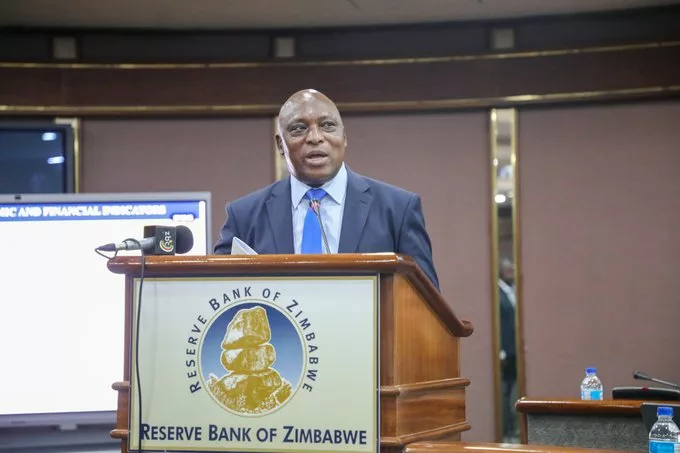|
Getting your Trinity Audio player ready...
|
Writes Dr Tapwa Mashakada
The Central Bank plays a key role in the promotion of growth and stability in the economy. Monetary policy is meant to complement fiscal policy to achieve price stability and reduce exchange rate volatility.
This article reviews the Monetary Policy Statement that was announced by the Governor on 6th February 2025.
Measures to control inflation
In terms of the Reserve Bank Act, the major functions of the central bank are to protect the value of the domestic currency and maintain price and exchange rate stability among other objectives.
Month-on-month inflation (%)
Zig inflation has been rising. The inflation figures are evident:
June 2024
(Zig 0.04%) and USD (- 0.29%)
September 2024
(Zig 5.8%) and USD (0.73%)
October 2024
(Zig 37.2%) after a sharp devaluation in September 2024). The USD inflation rate was 0.65%.
November 2024
(Zig 11.7%) and USD (0.09%)
December 2024
(Zig 3.7%) and USD (0.6%)
January 2025
(Zig10.5%) and USD (11.5%)
Inflation spiked in January 2025 causing a general increase in prices. This made the business environment very difficult and uncompetitive. In a bid to control inflation and liquidity, the Reserve Bank announced that it will maintain a tight monetary policy stance.
The Monetary Policy Statement announced the following measures to control Money Supply Growth and Inflation:
- Maintaining the Bank policy rate at 35%
- Maintaining the statutory reserve ratios at 30% for demand deposits and 15% for savings and fixed deposits in both Zig and USD.
- Controlling Reserve Money Supply which decreased from Zig 3.5 billion in December 2024 to Zig 3.4 billion in January 2025.
Measures to protect the domestic currency
To protect the value of the Zig and promote its use in the economy, the Reserve Bank announced the following measures:
- Increasing the reserve cover from Zig13.6 billion to Zig14.5 billion. This provides 3 times cover of reserve money which stands at Zig 3.5 billion
- Gold holdings of USD 241 million
- Mineral royalties of USD 122 million
- Total Reserves covering Zig now stands at USD 548 million
Measures to support exchange rate stability
The Bank also announced key measures to prop up the exchange rate. These are:
- Reducing foreign currency retention for exporters from 75% to 70%. This increases the surrender requirements from 25% to 30%.
- Removal of the 5% trading margin to allow better price discovery
- Removal of limits on forex Previously the limit had been fixed at USD 500 000 for primary users and USD 100 000 for secondary users.
- Review of prepaid international debit and credit cards limit from USD 500000 (five hundred thousand USD) to USD 1 000 000 (one million USD)
- setting upper limits to facilitate winding down by banking institutions that are currently over-exposed in foreign currency trading. This is meant to minimize exchange rate risks.
- Sustainable accumulation of gold and foreign currency
Measures to stimulate the economy
- The Targeted Finance Facility to enhance banks’ support to the productive sector
Measures to regulate the financial sector
- banning of safe deposit boxes to promote banking practices
- Promotion of Savings by raising deposit rates: from Zig 5%to 5% and from USD 1% to 2.5% on Savings and Zig 5% to 7.5% and USD 2.5% to 4% on time deposits.
- measures to support financial inclusion
(4) Monitoring bank liquidity positions (5) promoting the inter-bank market trading
- reduction of bank charges – no bank charges for balances below USD100 and Point of Sale transactions below USD5.
- promoting digital payments
- enforcing the sale of airtime and data bundles in both USD and ZIG
- surveillance on Micro-finance institutions to protect consumers
Conclusion
- The 6th February 2025 RBZ Monetary Policy Statement seeks to bring price and exchange rate stability, maintain a tight monetary policy and promote economic growth. The targeted growth rate for 2025 was set at 6% by the Minister of Finance in the 2025 fiscal policy statement.
- The targeted inflation figure of 3% in 2025 is difficult to sustain and so are the tight monetary policy conditions. As long as the country is using the Zig alongside the USD, there will always be arbitrage. As a result, inflation will be driven by the parallel market rate.
- The export sector is the goose that lays the golden egg. The RBZ should have increased the export retention level to 85%, a figure that exporters have.
- The nexus between gold reserves and the local currency is Despite the accumulation of these reserves, Zig inflation skyrocketed from 3.7% in December 2024 to 10.5% in January 2025. USD inflation shot up from 0.6% in December 2024 to 11.5% in January 2025. What this effectively means is that inflation is footloose and the tight monetary policies are not enough to control inflation. Moreover, the tight monetary policy conditions are hurting the economy by pushing back aggregate demand. Inflationary expectations continue to drive inflation upwards due to low market confidence levels.
- The Reserve Bank continues to indulge in quasi-fiscal operations which have the effect to increase money supply growth via the printing of money.
(Tapiwa JG Mashakada, PhD, Founder and Executive Director: Maji-Marefu Institute of Economic Governance)






